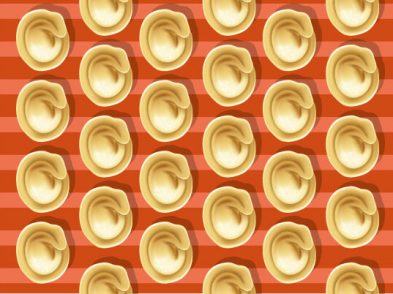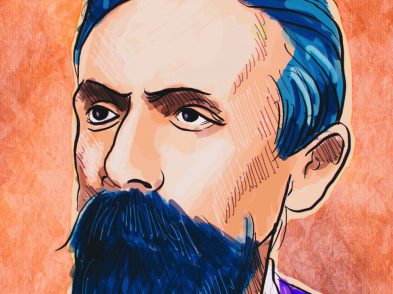In 1933, Villa Sparta, situated on the hillside leading up to Fiesole, just behind the San Domenico convent, became home to a royal refugee: exiled Queen Helen of Romania. She soon set to work lavishly embellishing the rooms of the fifteenth-century villa, and, in 1935, employed British garden designer and architect Cecil Pinsent to lay out a splendid formal Italian garden. By 1948, she had twice lost her official royal realm, yet for the next 30 years, she reigned supreme in elite expatriate communities in Italy and Switzerland.
Princess Helen of Greece and Denmark was born in Athens on May 2, 1896, the third of the six children of Crown Prince Constantine of Greece (later King Constantine I) and Princess Sophia of Prussia. Her personal life was destined to play out against the backdrop of Europe’s political upheavals.

In 1910, her family lived in exile in Germany after a plot failed to usurp the then king and to put the crown prince on the throne. Then, in 1917, finally king, Constantine was again exiled because, much to the displeasure of the British and the French, he had attempted to keep Greece neutral during World War I. This time, the family fled to Switzerland, where, in December 1919, Princess Helen met her cousin, the recently divorced Crown Prince Carol of Romania (later King Carol II). A year later, Carol asked for her hand.
Despite her mother’s opposition to the match, the couple married in Athens on March 10, 1921. Following their honeymoon, the newlyweds moved into an apartment in the Cotroceni Palace in Bucharest, but preferred to reside at Foishor, a chalet in the grounds of the Peleş Castle in Sinaia, where their only son, Michael, was born on October 25, 1921.
However, the flamboyant Carol soon began to flaunt an affair with a commoner, Magda Lupescu. Forced to renounce his rights to the throne, in 1925, he left Romania with Magda and settled in Paris. When Carol’s father, King Ferdinand, died in 1927, Michael was proclaimed king. However, in 1930, Carol returned to Romania and deposed Michael, declaring that he had been rightful king since his father’s death.
Carol had divorced Helen on the grounds of incompatibility in 1928. However, once he reclaimed the throne, the government tried to have the divorce annulled. This was the last thing Carol wanted, so, it is reputed, he set about persecuting and defaming her. Faced with this situation, she fled to her mother’s villa near Florence, but in 1932, she returned to Bucharest to seek concessions regarding access to her son and to secure payment of her royal allowance. Achieving the latter, she was able to buy Villa Sparta.
While Helen lived in Villa Sparta, King Carol II provoked tumult throughout Romania. When Carol was finally deposed and forced to flee to Brazil in 1940, Michael, by then 18, was again declared sovereign. King Michael asked Helen to return from Italy to Romania as Queen Mother. There, during World War II, Helen nursed the wounded. For her efforts to save Romanian Jews, she was later named one of Israel’s Righteous Among the Nations.
Michael ruled until December 30, 1947, resisting Soviet pressure to abdicate until, on Stalin’s orders, the Soviet army of occupation forced him to do so, threatening to kill thousands of Romanian students if he did not comply. He abdicated only at gunpoint, with the palace surrounded by troops and his telephone lines cut.
Some details of Queen Helen’s second exile from Romania are told by art historian John Pope-Hennessy, a frequent guest at Villa Sparta, in his autobiography, Learning to Look, My Life in Art (1991). He writes that the ‘heroic figure’ Queen Helen confided that when the communists took over Bucharest, she and her son were put under house arrest at Sinaia. She had local carpenters build double-bottomed boxes so they could take part of the royal art collection with them if and when they were able to leave the country.
Among the final tally of the 42 paintings from the collection they managed to expatriate, the two most famous were pictures by El Greco, which, tucked behind far less valuable paintings, left the country via the Orient Express, smuggled out at some point before Helen and Michael’s final departure, in December 1947, perhaps when they were granted permission to travel to London for the November 20 wedding of their cousins, Princess Elizabeth (now Queen Elizabeth II) and Prince Philip of Greece and Denmark. (One of the two, El Greco’s Portrait of Dr. Francisco de Pisa, was later sold to the Kimball Museum in Fort Worth, Texas for a reported USD 3 million. The other El Greco was returned to Romania in 2004 as a gift from the former husband of one of King Michael’s five daughters.)
There is no doubt that Helen was beautiful and elegant, but historians are divided in their views about her. While most depict her as almost saintly, a scorned wife whose ex-husband hounded her, spitefully keeping her away from her son, some portray her as arrogant, ambitious and selfish, voluntarily choosing exile because she had fallen in love with Italy’s Duke of Aosta and hoped to eventually marry him.
It is hard to tell which version is true. We do know, however, that she spent the rest of her life far from both her homeland, Greece, and her former realm, Romania, instead living between both Italy and Switzerland until her death, at 86, on November 28, 1982, in Lausanne, where her remains are buried in the Greek Orthodox Church.








